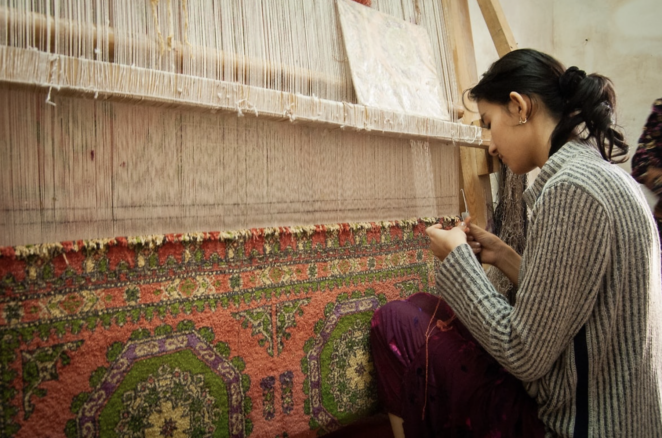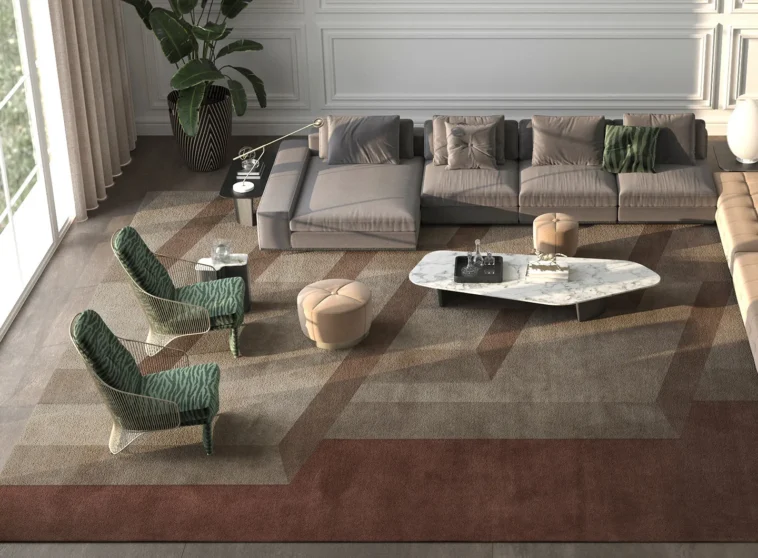Do you want to decorate your house or apartment with a beautiful rug? If so, you’ll want to check out our article. Not a lot of people understand or love interior design, which is why getting a bit of help from someone who understands quality, colors, and textures might feel appreciated.
Here, we’ll show you how to narrow down your rug options and pick the best one for your workspace, home, bedroom – you name it! If you’re interested in learning about rug manufacturing and are on the lookout for a durable, trendy, and cost-effective style, go no further; we’ve got you covered.
Below you’ll find all the information you require to make your next purchase.
1. Know Where To Shop
If you are really picky and you want to find something durable, high-quality, and fully customizable, check out Custom Rugs.
These rugs are handcrafted and completely customized to your home, business, church, school, or military needs. The company has been around since 1987 and has experienced creating cozy and comfy vibes at your home.
You can go for custom rugs, custom floor mats, office rugs, entry rugs, and many many more! Browse through their gallery, get in touch, and make smart shopping decisions. You will fall in love with the outcome.
2. Techniques & Construction of Rug Weaving and Woven Carpets

It’s possible that the rug’s materials and weaving technique is more telling of its quality than the design. The durability and value of a rug are highly sensitive to its knot count, pile height, and foundation. Someone trained to recognize and assess these characteristics might learn more about the rug than just its quality, such as where it was made and how old it is.
These knots resemble loops more than they do traditional knots. Each knot is woven by encircling two adjacent warps. The “pile” of a rug is made up of the “knot collar” that surrounds the rug’s warps and ends.
Because there are so many ways to weave these knots, pile carpets come in a wide range of designs. Woven carpets are often used by big families and those who wish to create a calm, cozy, and traditional atmosphere in their homes.
3. What Materials Are Used For Carpets?
You can have them with manmade materials (like polyester and olefin) or organic ones (like wool, silk, or jute) that are resistant to stains. Silk and viscose are two examples of rugs that combine natural and synthetic fibers for durability.
Since handcrafted items involve human ability, talent, and time, it seems to reason that they will be more expensive than their mass-produced, machine-made counterparts. The problem affects both carpets and rugs. Since each knot is woven by hand in a specific pattern, hand-knotted carpets are the most expensive. The longer it takes to create a rug, the more it will cost.
The most beautiful and long-lasting carpets are made from wool and silk, two of the most expensive materials. Since the cost of labor and the expected level of expertise of the workforce varies from country to country, charges will reflect this. Carpets are typically charged per square foot or per square meter, but this does vary based on their size.
4. Fundamentals Of Rug Making
Although some of the special techniques involved in weaving an Oriental rug may differ from country to country and even from region to region, the principles of rug-making, from dying the yarn to shearing the finished piece, are essentially the same worldwide and have changed very little over the centuries.
The majority of Oriental rugs have a wool pile, usually from sheep, and the quality of the pile varies depending on the breed and diet of the sheep, the climate in the area, and when the animals are sheared, among other things. Before being prepared for hand- or machine-spinning into yarn, sheared wool must go through a number of steps. These include washing, spinning, and carding, which teasingly straighten the fibers.
After being dyed in an exquisite variety of colors, the yarn is afterward slowly sun-dried. The weavers are directed throughout the entire rug-making process by a detailed cartoon representation of the carpet design. A scale model of the design is made out of graph paper.
Over the ages, loom designs haven’t changed all that much. To the untrained eye, handcrafted and machine-made carpets look remarkably similar.
However, you can tell them apart if you are aware of the distinguishing characteristics and have a keen eye.
5. Machine-Making Options
Machine making is by far the most pervasive and popular approach in the rug industry today. Machines that can loom, weave, hook, and tuft can greatly speed up the production of finished carpets compared to their manual counterparts.
Computer-aided design (CAD) software allows automated weaving machines to accurately reproduce a broad variety of complicated patterns. Rug defects and issues are minimized by machines.
Machine-made carpets, especially those of higher quality, can often outlast even hand-knotted carpets. Therefore, if they are maintained, they will last for several decades. Speaking of which, the natural and/or synthetic fibers in their construction may make these carpets easier to maintain and clean than their more delicate hand-made counterparts. Most of the time, when they get dirty, you can simply toss them in the washing machine.
Shop For Your New Carpet, But Do It In Style!
So, ready to make that final decision? If so, what did you learn in this article, and did we help you narrow down your choices? We know that everyone can enjoy one gorgeous rug, no matter their room, or the size of that room for matter. Let us know what you end up choosing and how your shopping experience goes, we can’t wait to see you with something new, pretty, and practical!



